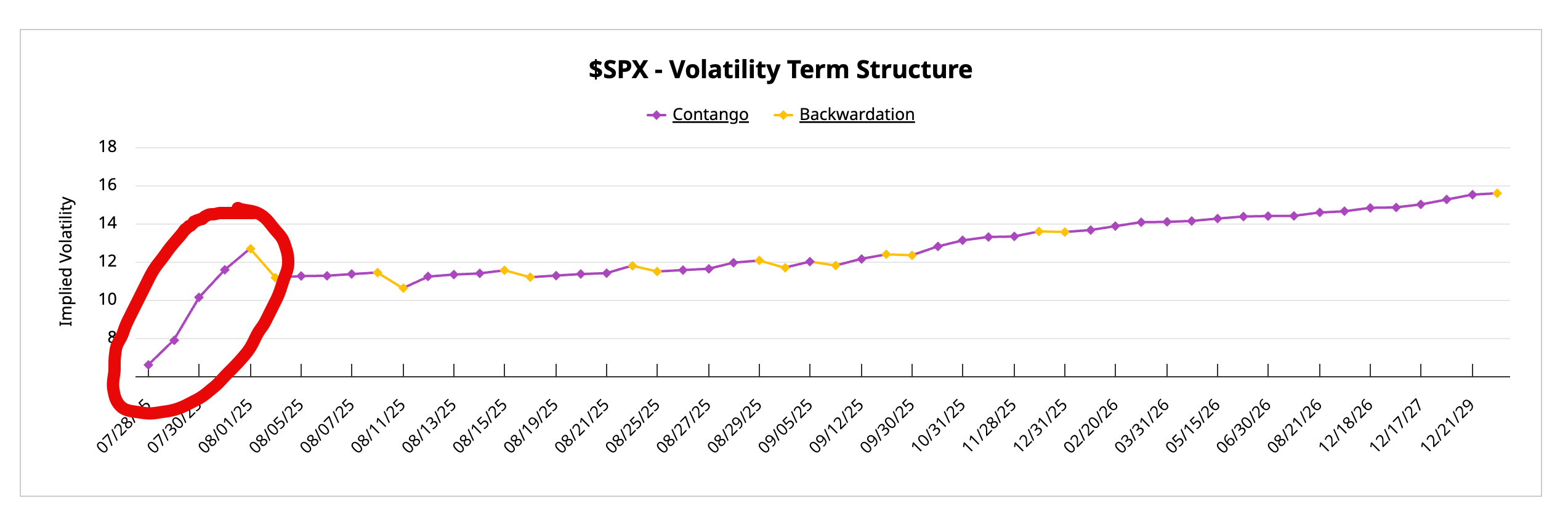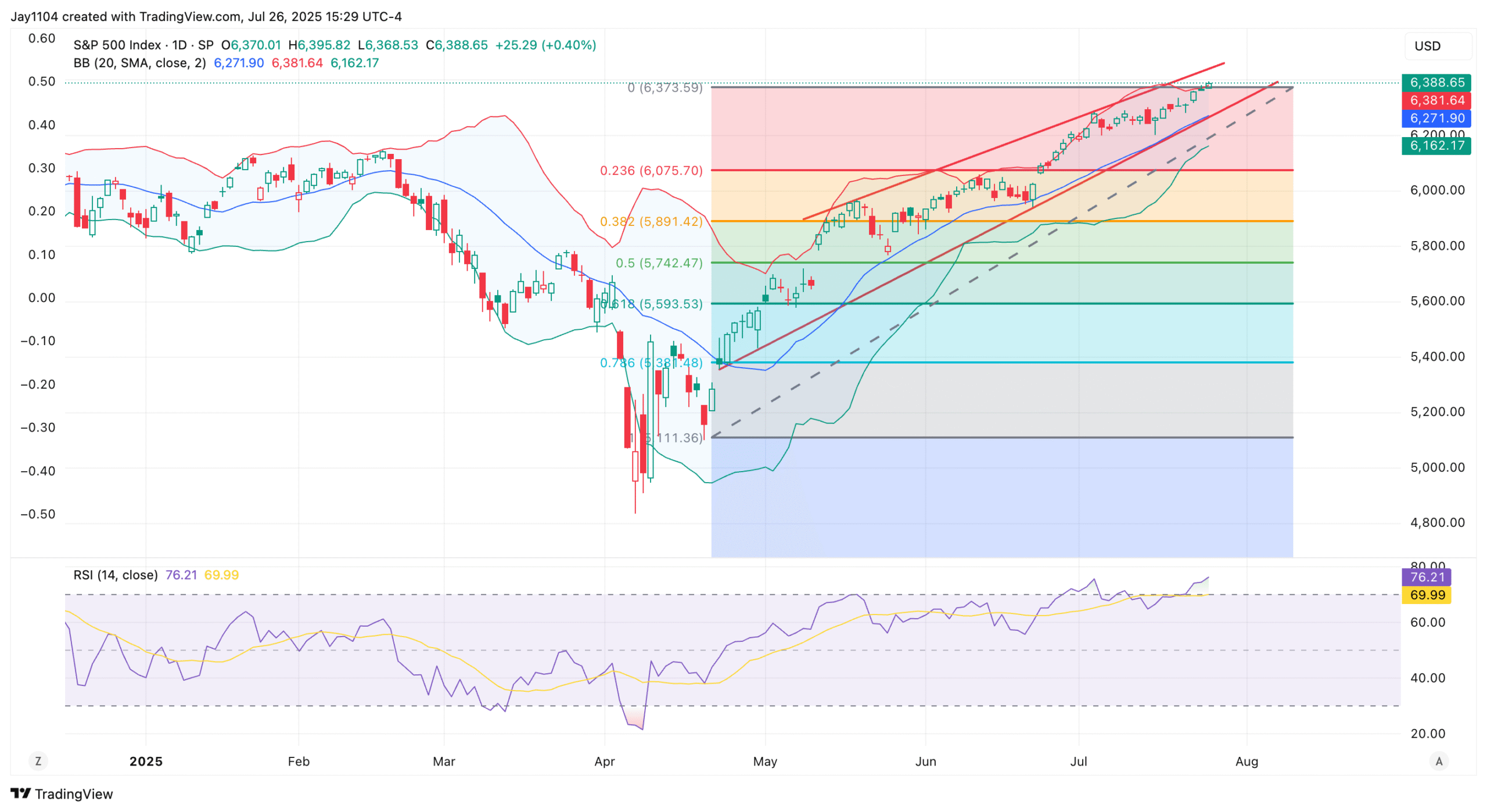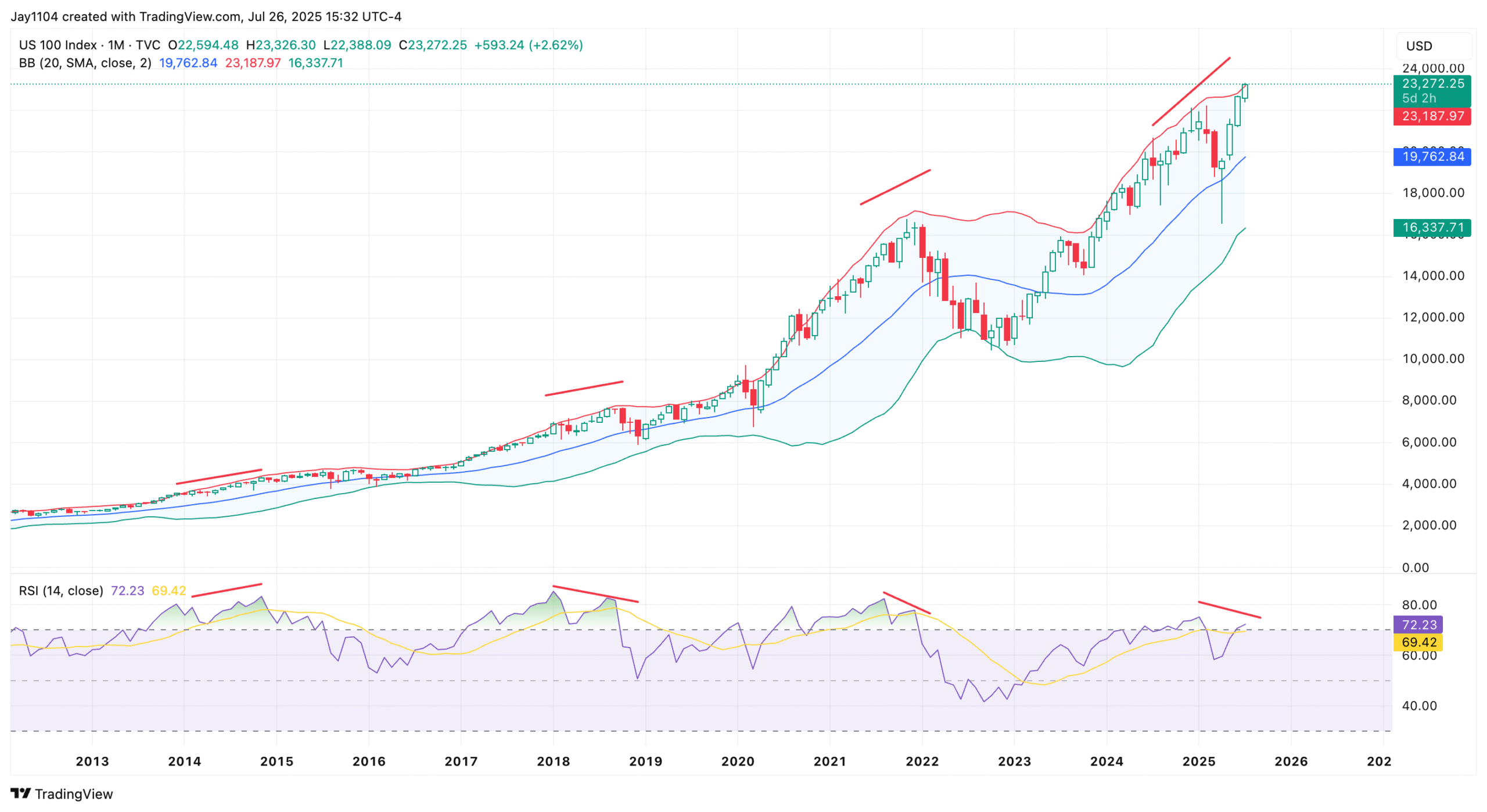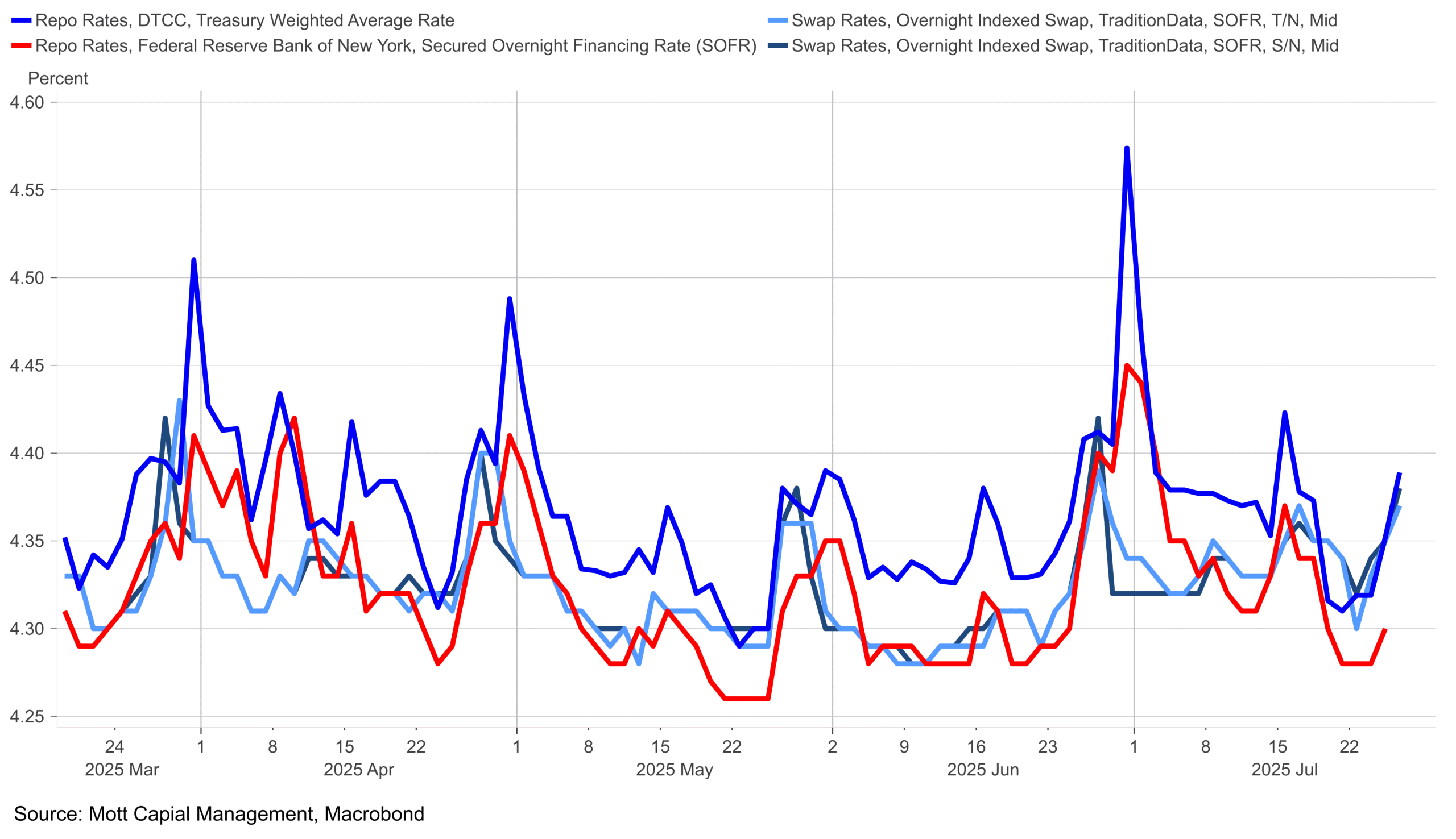A busy week is coming up with several significant market-moving events. Any one of these events individually could shake things up, but in this case, there’s at least one event every day.
On Monday, we get the first part of the quarterly refunding announcement, followed later in the day by the and Treasury auctions. Tuesday brings data and a Treasury auction.
Wednesday is packed, featuring the , second-quarter data, the second half of the quarterly refunding announcement, and meetings of both the Bank of Japan and the . On Thursday, we’ll see the and the June report.
The week concludes on Friday with the release of the jobs report and . As if that weren’t enough, Amazon (NASDAQ:), Apple (NASDAQ:), Meta (NASDAQ:), and Microsoft (NASDAQ:) are all reporting earnings this week as well.
Additionally, a largely forgotten court battle on tariffs will start on July 31, as the appeals court reviews the legality of the President’s tariffs.
Yet, remarkably, the market doesn’t seem the least bit concerned about any of this. Implied volatility for Monday sits at a breezy 6.6%, rising to a supposedly “ground-shaking” 12.7% by Friday. This must be a joke, right? It has to be…
(Source: Barcharts)
If the market continues trading in the tight ranges we’ve seen in recent weeks, even after all this news, I would be shocked. Something wouldn’t just be wrong—it would be completely broken. For 1-month realized volatility to fall further, we’d need daily trading ranges of less than 40 bps. To push the 10-day realized volatility lower, the index would need to trade in ranges narrower than 30 basis points per day.
I’ve noted repeatedly that the end of last week marked the window when the implied correlation should begin to rise, potentially signaling a market top. So far, that hasn’t happened, but the window remains open through the end of this week, especially given the major earnings reports still due from META, MSFT, AAPL, and AMZN.
On top of that, the is now in overbought territory, with an RSI of 76, and is trading above its upper Bollinger Band.
Not only that, but the is also overbought on the monthly chart, with an RSI above 72 and trading above its upper Bollinger Band. Additionally, notice the price is rising while the RSI is forming a lower high—a divergence pattern similar to what occurred in 2018 and 2021.

Additionally, as month-end approaches, liquidity typically becomes a concern—a problem compounded this week by significant Treasury settlements, which are likely to drive a more pronounced rise in the Treasury General Account (TGA). Overnight repo rates have already begun to increase, suggesting SOFR will move higher on Monday and will need to be watched during the week.
Overall, a lot is going on this week, yet the market appears overly complacent. Given the sheer volume of news flow, I would be genuinely surprised if volatility remains this tight for much longer.
